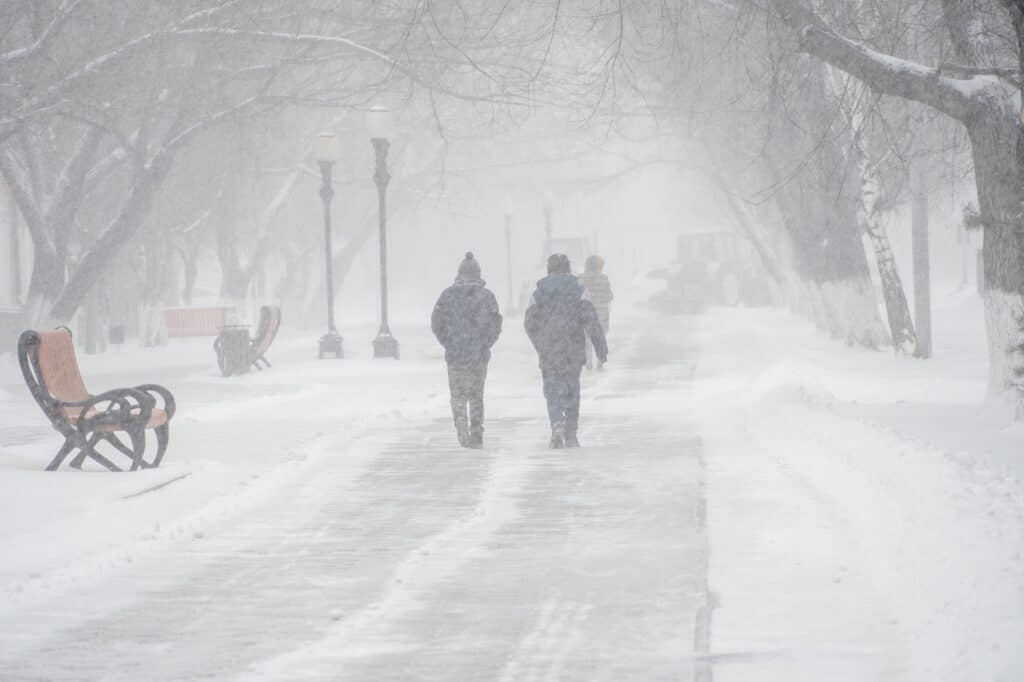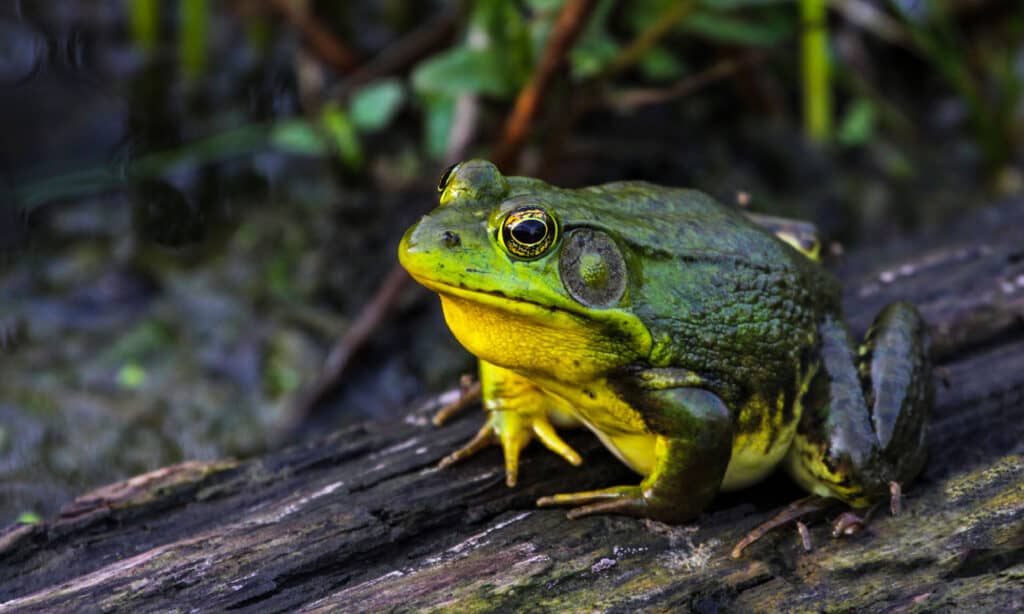Ohio receives relatively warm summers and cold winters. The state’s location near the Great Lakes also paves the way for massive blizzards. Every winter, Ohio gets hit with some pretty intense snow storms, but in 1978, there was a storm that was on a completely different level. It brought high winds, frigid temperatures, and feets of snow!
The snow turned the Ohio Great Lakes region into a winter wonderland. While it may have been a beautiful snowscape, the danger of the biggest blizzard can’t be overstated. It had a severe impact on the residents of Ohio. Want to learn more about it? Keep reading to find out everything you need to know about the biggest blizzard ever to hit Ohio.
Weather Patterns In Ohio
The weather in Ohio can be pretty varied. Most of the state has a humid continental climate, but the southern counties have a humid subtropical climate. This means that summers in Ohio can be hot, while winters can range from snowy to cold.
There’s usually a good amount of rain and snow throughout the year, and severe weather, like tornadoes, isn’t uncommon. The state also gets its fair share of lake effect snow storms, especially on the southeast side of Lake Erie, which is known as the Snowbelt.
Residents of the “Buckeye State” are used to extreme temperature fluctuations and are used to a good amount of snowfall. However, the winter of 1978 was different altogether.
Average Temperatures And Precipitation
In Ohio, temperatures are similar to those found in other states in the north-central and eastern United States. While it doesn’t get super hot in the summer, with highs rarely going above 100 degrees Fahrenheit (38 degrees Celsius), it can get quite cold in the winter, sometimes plummeting below -20 degrees Fahrenheit (-29 degrees Celsius).
July is typically the hottest month, and you can expect the temperature to go from the mid-60s to mid-80s Fahrenheit (upper 10s to 30 degrees Celsius), while in January, the high is typically in the mid-30s Fahrenheit (around 2 degrees Celsius) with lows around 20 degrees Fahrenheit (about -7 degrees Celsius).
Ohio can be affected by cold, dry fronts from Canada and warm, humid fronts from the Gulf of Mexico, which can bring a lot of snow or rain. On average, the state gets around 40 inches (1,000 millimeters) of precipitation per year, including about 28 inches (700 millimeters) of snow.
However, in the northeastern region known as the Snowbelt, the average annual snowfall can be over 100 inches (2,500 millimeters).
On July 21, 1934, Ohio experienced its hottest temperature on record – a scorching 113 degrees Fahrenheit at a weather station located four miles northwest of Gallipolis.
On the other end of the spectrum, the state’s lowest temperature ever recorded was a frigid -39 degrees Fahrenheit in Milligan on February 10, 1899.
And in 1996, Ohio saw a whopping 68.9 inches of snowfall in just six days in Hambden Township, Geauga County, breaking the previous record for the state’s biggest single-storm snowfall of 42 inches.
The Blizzard Of 1978 In Ohio

The blizzard of 1978 is often cited as one of the most severe blizzards in US history.
©Sambulov Yevgeniy/Shutterstock.com
In the winter of 1978, the Ohio Valley and Great Lakes region was hit by a massive winter storm, otherwise known as the Great Blizzard of 1978. This storm caused major disruptions, paralyzing neighborhoods, cities, and even whole states.
The blizzard was formed when two low-pressure systems merged and quickly intensified, leading to strong winds and plunging temperatures. Cleveland saw record-low atmospheric pressure of 28.28 inches of mercury, which remains the lowest ever recorded in Ohio.
As the storm intensified, wind speeds increased, with gusts reaching an average of 50 to 70 mph on January 26. In cities like Dayton and Columbus, wind gusts were on the higher end of the spectrum, reaching 69 mph. And in Cleveland, near Lake Erie, wind gusts were even stronger, reaching 82 mph. To put that into perspective, Category 1 hurricanes have wind speeds of at least 74 mph, and EF0 tornadoes have wind speeds of 65-85 mph.
The combination of strong winds and plunging temperatures led to extremely cold wind chills. In Akron, there was a 21-degree temperature drop within just one hour, from 5 a.m. to 6 a.m., on January 26.
The strong gusts of wind also caused snowdrifts (deposits of snow heaped by the wind) as tall as houses, with some reaching 15-25 feet in height. These massive drifts buried homes and cars. They were trapping people on the road or in their houses. It was difficult to accurately measure snowfall totals due to the blowing snow and tall drifts. However, it is known that parts of northeast Ohio saw around a foot of snow, while Columbus received 4.7 inches, Cincinnati saw 6.9 inches, and Dayton received 12.9 inches from January 25 to 27.
Aftermath
The aftermath of the January 27th blizzard left a trail of destruction and disrupted all forms of transportation. The Ohio Turnpike was closed for the first time ever, and other highways, roads, and railways were also at a standstill.
This caused food shortages and made it difficult to carry out rescue efforts, as many people could not leave their homes. In total, there were 51 fatalities reported in Ohio, and the storm ended up being Ohio’s most expensive ever, causing approximately $73 million in damage.
Many individuals were stranded in their cars or homes, including one semi-truck driver buried in his vehicle by a snowdrift and wasn’t found for almost a week. Additionally, thousands of homes and businesses lost power.
Digging out from the blizzard took Ohio residents several days to complete. The National Guard played a crucial role in rescuing thousands of stranded individuals. Yet, amidst the chaos, several inspiring survival stories emerged from different parts of the state.
51 Ohioans died in the blizzard, and the national guard was sent into the state to rescue truck drivers who were stranded on the highway for days. Ohio residents remember the day as people came together to help each other. They welcomed stranded motorists into their homes, fed them, gave them warm clothes, and let them wait out the storm. Some neighbors baked bread and shared it with their entire neighborhood, as some people could not get food for days. One woman even gave birth during the blizzard, and the doctor had to come in on a snowmobile to help with the delivery.
All in all, the Ohio blizzard of 1978 was catastrophic and caused lots of destruction to the infrastructure and took quite a few lives. It remains of the worst disasters in Ohio history.
Wildlife In Ohio
Ohio is home to diverse wildlife, from large mammals like white-tailed deer and black bears to smaller creatures like the eastern gray squirrel and the American robin. The state is also home to many reptile and amphibian species, including the Eastern box turtle and the American toad.
In the spring and summer months, it’s not uncommon to see colorful butterflies like the monarch and the painted lady fluttering about. Ohio is also home to various bird species, including the state bird, the cardinal. If you’re lucky, you may spot a bald eagle soaring through the skies.
But what survival skills allow these animals to thrive in blizzard conditions? Let’s explore.
Squirrel

Squirrels build cozy little nests to stay warm.
©iStock.com/Nigel Harris
Have you ever noticed squirrels gathering acorns in your yard? If you have an oak tree, chances are you have. These little guys are pretty smart – they collect the acorns and store them in safe places to access them when the ground is covered in snow, and they can’t find food.
Interestingly enough, squirrels don’t hibernate as some other animals do. Instead, they just slow down their activity and might sleep for a few days during a snowstorm. They also build cozy little nests out of twigs and leaves on the tops of trees to stay warm. While this extreme cold blizzard would have been drastic for any animal, squirrels would have fared well.
Frogs

American bullfrogs can stay in water for months.
©iStock.com/187715314
Did you know that some frogs can survive the winter underwater? Aquatic frogs like the American bullfrog build hidden dens in the water, called hibernacula, where they can stay during the colder months. These guys go into a state called torpor, where their metabolism slows down, so they don’t use much energy.
They can stay in this state for months at a time! It’s pretty amazing how they survive in cold water, but as long as the water isn’t frozen, they can absorb oxygen through their skin. They just need to ensure they’re in water with a lot of oxygen.
Fish
Fish can survive the winter by slowing down their activity. They become really sluggish and almost inactive, which helps them conserve energy. If they’re in moving water, they’ll try to find a place to hide from the current, like behind rocks or in deep pools. And if they’re in a pond, they’ll group together and go deep under the water to avoid ice or freezing water.
It’s interesting how different species of fish have different ways of surviving the winter – some, like trout, actually prefer cold water and are more active during this time. But for young fish, it can be especially tough to make it through the winter. They might not be developed enough to handle extreme conditions and could become prey for bigger fish. Fish in shallower water would not fare as well, as the thick ice might prevent the fish from swimming away, and eventually, if the cold weather continues, they could freeze to death.
Snakes
Snakes are ectothermic, meaning their body temperature depends on their surroundings’ temperature. During the winter, they need to find a warm place to rest to regulate their body temperature. This is known as a hibernaculum. Snakes may use burrows, holes in the ground, or even warm spots like garages or basements as their hibernaculum.
While in the hibernaculum, snakes enter a state called brumation, where their body temperature drops and their metabolism slows. This allows them to go without food for longer periods. They may also become sluggish and inactive.
On warmer days, snakes may emerge from their hibernaculum to bask in the sun and warm up, but they typically remain underground until winter has passed.
Up Next
- The 11 worst blizzards in the united states: If this article has piqued your interest in learning about dangerous blizzards, get to know the worst blizzards to ever occur in the United States!
- The 5 States With the Most Dangerous Blizzards: Here are the top states that have the most dangerous blizzards! Unsurprisingly, the states that made this list are known to be incredibly snowy states.
- The 5 Deadliest Blizzards of All Time: Looking internationally, get to know the 5 worst blizzards in recorded human history! These blizzards have caused a lot of destruction, and hopefully, we are now more prepared than ever to handle these extreme weather events.
The photo featured at the top of this post is © iQoncept/Shutterstock.com
Thank you for reading! Have some feedback for us? Contact the AZ Animals editorial team.






